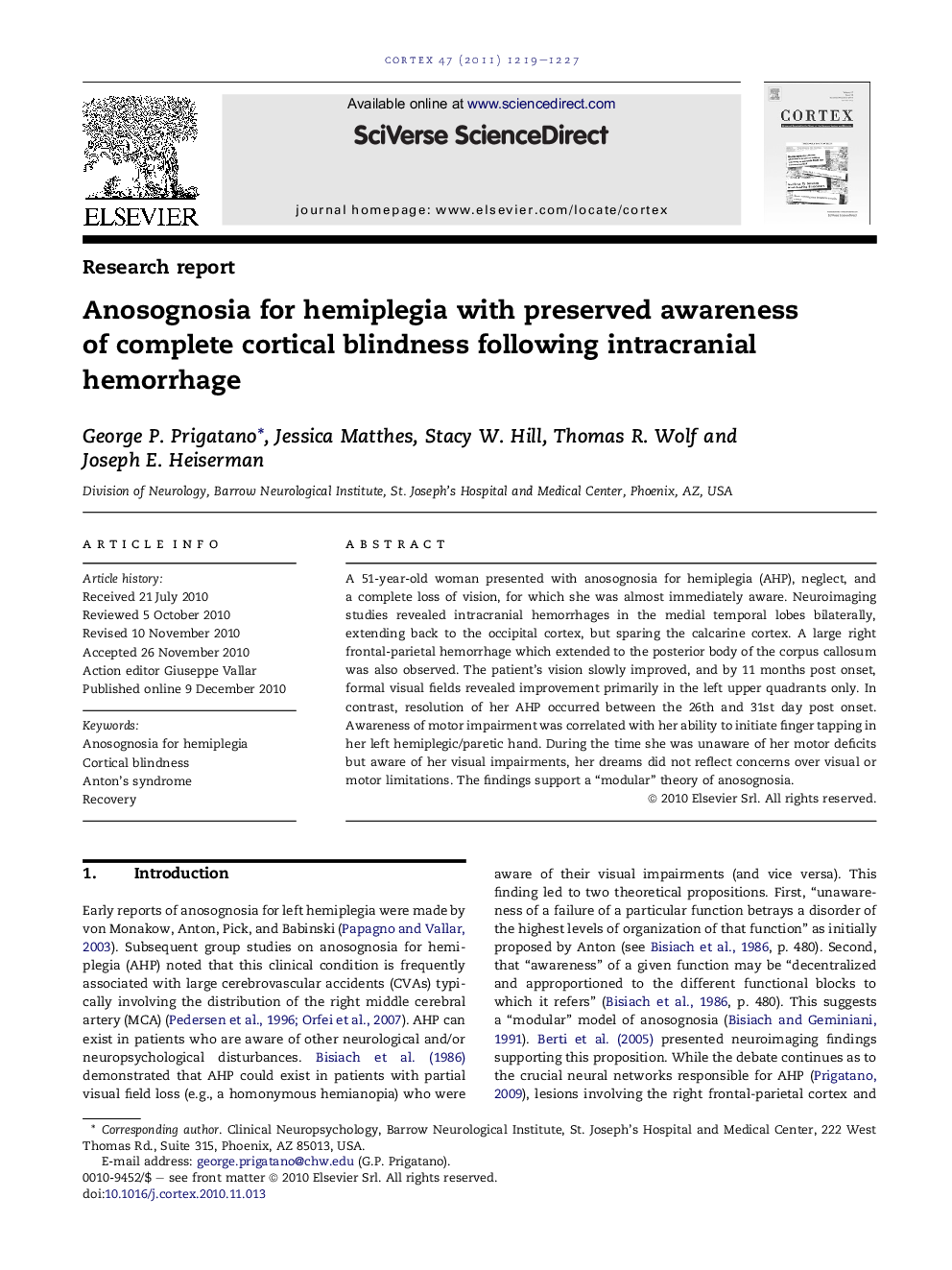| Article ID | Journal | Published Year | Pages | File Type |
|---|---|---|---|---|
| 942268 | Cortex | 2011 | 9 Pages |
A 51-year-old woman presented with anosognosia for hemiplegia (AHP), neglect, and a complete loss of vision, for which she was almost immediately aware. Neuroimaging studies revealed intracranial hemorrhages in the medial temporal lobes bilaterally, extending back to the occipital cortex, but sparing the calcarine cortex. A large right frontal-parietal hemorrhage which extended to the posterior body of the corpus callosum was also observed. The patient’s vision slowly improved, and by 11 months post onset, formal visual fields revealed improvement primarily in the left upper quadrants only. In contrast, resolution of her AHP occurred between the 26th and 31st day post onset. Awareness of motor impairment was correlated with her ability to initiate finger tapping in her left hemiplegic/paretic hand. During the time she was unaware of her motor deficits but aware of her visual impairments, her dreams did not reflect concerns over visual or motor limitations. The findings support a “modular” theory of anosognosia.
